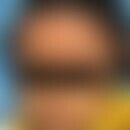DefinitionThis section has been translated automatically.
LIG4 (DNA ligase 4) is a protein-coding gene located on chromosome 13q33. The protein encoded by this gene is a DNA ligase that repairs single-strand breaks in an ATP-dependent reaction. This DNA ligase is essentially responsible for V(D)J recombination and repair of DNA double-strand breaks (DSBs) by non-homologous endjoining (see NHEJ below). The LIG4 protein forms a complex with XRCC4 the X-ray repair cross complementing protein 4 and also interacts with DNA-dependent protein kinase (DNA-PK). It is known that both XRCC4 and DNA-PK are required for the NHEJ mechanism to repair double-strand breaks .
General informationThis section has been translated automatically.
Defects in this gene are the cause of the very rare "LIG4 syndrome" a complex immune deficiency syndrome (OMIM: 606593). Other diseases associated with LIG4 include multiple myeloma.
LiteratureThis section has been translated automatically.
- Ben-Omran TI et al (2005) A patient with mutations in DNA ligase IV: clinical features and overlap with Nijmegen breakage syndrome. Am J Med Genet 137A: 283-287.
- Girard PM et al (2004) Analysis of DNA ligase IV mutations found in LIG4 syndrome patients: the impact of two linked polymorphisms. Hum Molec Genet 13: 2369-2376.
- O'Driscoll M et al (2001) DNA ligase IV mutations identified in patients exhibiting developmental delay and immunodeficiency. Molec Cell 8: 1175-1185.
- van der Burg M et al (2006) A new type of radiosensitive T-B-NK+ severe combined immunodeficiency caused by a LIG4 mutation. J Clin Invest 116: 137-145.



